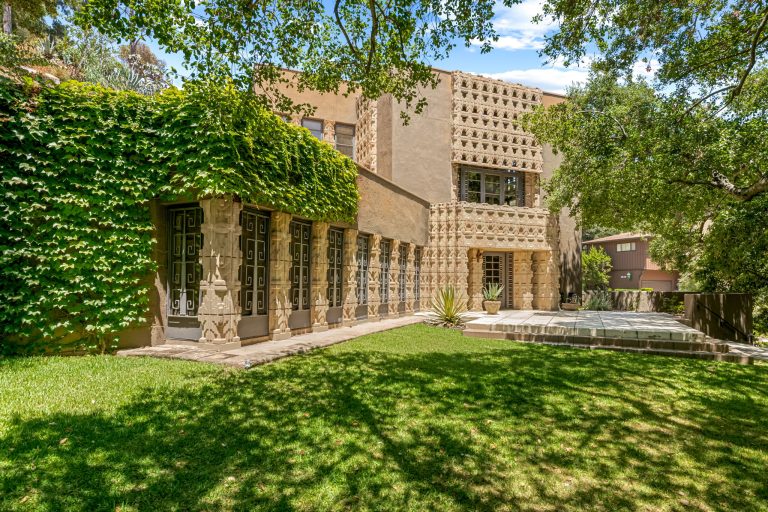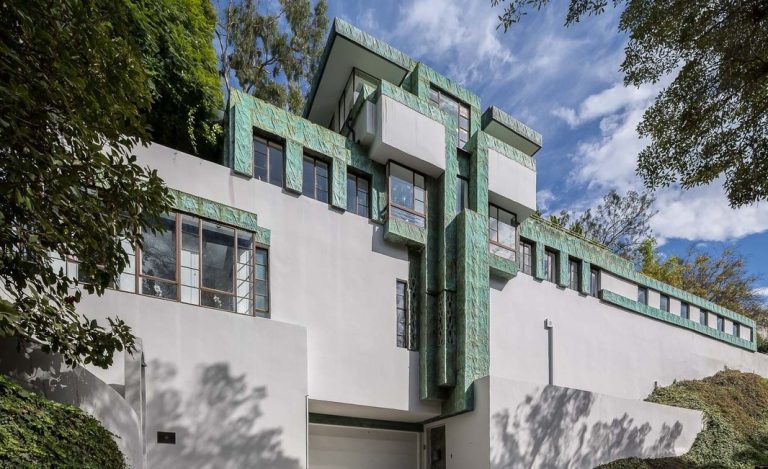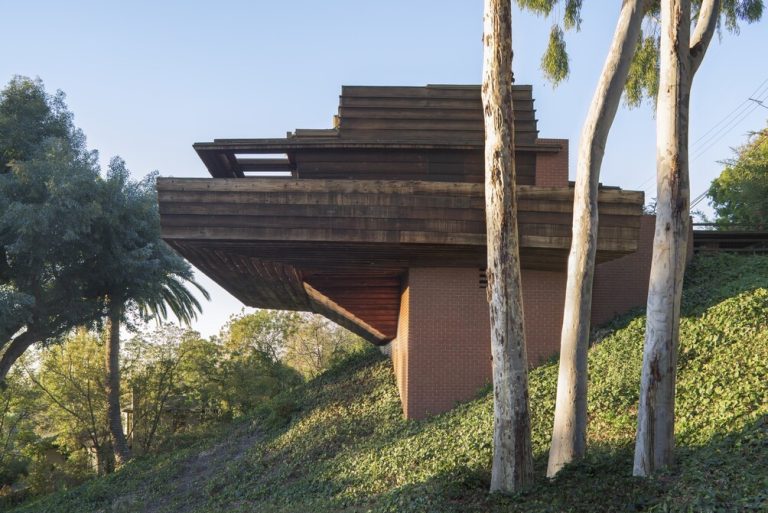(June 8, 1867 – April 9, 1959) – Known as the father of architecture, Frank Lloyd Wright was an American architect, designer, writer, and educator. His “Prairie Style” became the basis of twentieth-century residential design in the United States. Comfort, convenience, bold, plain walls, spacious family living areas, main rooms that flowed together and boundaries below broad glazed areas, reasonably realized. The typical Wright-designed residence from this period offered a wide, low roof over uninterrupted windows that turned corners, defying the conventional boxlike structure of most houses.
Comfort, convenience, bold, plain walls, spacious family living areas, main rooms that flowed together and boundaries below broad glazed areas, reasonably realized. The typical Wright-designed residence from this period offered a wide, low roof over uninterrupted windows that turned corners, defying the conventional boxlike structure of most houses.
Throughout his career Wright retained the use of ornamental detail, earthy colors, and rich textural effects. His sensitive use of materials helped to control and perfect his dynamic expression of space, which opened a new era in American architecture. He became famous as the creator and expounder of “organic architecture,” his phrase indicating buildings that harmonize both with their inhabitants and with their environment. The boldness and fertility of his invention and his command of space are probably his greatest achievements.
The Imperial Hotel (1915–22, dismantled 1967) in Tokyo was one of Wright’s most significant works in its lavish comfort, splendid spaces, and unprecedented construction. Because of its revolutionary, floating cantilever construction. He designed some 800 buildings, of which 380 were actually built and a number are still standing. UNESCO designated eight of them—including Fallingwater, the Guggenheim Museum, and Unity Temple—as World Heritage sites in 2019.
Did you know Frank Lloyd Wright invented Lincoln Logs?
Yes, this popular childhood toy was designed by none other than the son of architect Frank Lloyd Wright!
-
GLENDALE LANDMARK THE DERBY HOUSE, LLOYD WRIGHT, 1926 | MILLS ACT DESIGNATED, NATIONAL LANDMARK
A chance to restore one of L.A.’s most iconic pieces of architecture. Set on a unique expanse of land in Glendale’s historic Chevy Chase Canyon, the Derby House offers not just architectural significance, but a deeply atmospheric landscape. The property unfolds across gently undulating terrain – dotted with quiet clearings and shaded corners. Built in 1926 and recently designated under the Mills Act, the home is among the earliest examples of concrete textile block construction – an architectural system later championed by Wright’s father, Frank Lloyd Wright. Each hand-cast block was designed to shape not just the structure but the experience of time – casting shadows that shift with the day and giving a quiet rhythm to the light.
-
LOS FELIZ LLOYD WRIGHT HOUSE THE SAMUEL NOVARRO RESIDENCE
Los Feliz Lloyd Wright house, the Mayan inspired Samuel Novarro Residence has been meticulously renovated. Located in the exclusive neighborhood “The Oaks” in Los Feliz, this home is part of the Historic-Cultural Monument #130.
-
THE STURGES RESIDENCE BY FRANK LLOYD WRIGHT IN BRENTWOOD
The Sturges Residence, 1939 by Frank Lloyd Wright. The George Sturges House is a single-story house, designed by celebrated architect Frank Lloyd Wright and built for George D. Sturges in Brentwood Heights; It is the first time it’s been available in nearly 50 years.










